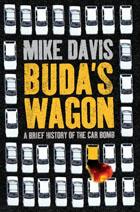Women make up more than half the population of the United States, about 51%. We women are 55% of college students and we take more degrees than men. About 44 million of us between the ages of 15 and 50 have children, but only 5 million or so are stay-at-home moms. That’s because we go out to work: this year 74.6 million of us over age 16 make up almost half (47%) of the labor force. Forty percent of us work in fields thought to be ours by tradition: we are 90% of nurses, 93% of dental assistants, and 97% of preschool and kindergarten teachers. But we are also more than half of the nation’s pharmacists, a third of its physicians and surgeons, a third of its lawyers and judges, and a quarter of its computer programmers. We are the majority owners of 38% of U.S. businesses, employing millions and annually generating revenue in the trillions of dollars.
But here’s a problem: as workers, we don’t get fairly paid. For every dollar a man earns, we average about 79 cents. These days, young women may get closer to 90 cents, but by age 35, if not before, they hit a wall; for older women, the wage gap only widens. Due to that gap, the average full-time working woman over the course of 40 years will be cheated out of $418,800; she would have to work 10 more years to make up the difference. If she’s black, she will be shorted $840,040 and need to work 23 more years. If she’s Latina, she will lose $1,043,800 and need to work another 34 years. Then there’s the special case of the financial and insurance industry: there, women make only 60 cents to a man’s dollar. All this despite the fact that Congress passed an Equal Pay Act more than 50 years ago. In addition, most of us run into a low-hanging ceiling. Take K-12 education, for example. Women are 76% of its teachers, 52% of its principals, but far less than a quarter of its superintendents. Similarly, women are 73% of medical and health care managers but only 4% of health care CEOs.
You’d think we women could turn for justice to our political representatives, but they’re in short supply. In many of the world’s parliaments, between 40% and 63% of the members are female, while in the U.S. that number hovers at about 19%. And it’s a peculiarity of our Congress that congressmen feel entitled to interrupt, rebuke, and silence our congresswomen. (Think of Senator Richard Burr lecturing Senator Kamala Harris, or Republican Majority leader Mitch McConnell officially silencing Senator Elizabeth Warren.) Then, of course, there’s our demented president tweeting a doctored video of his big, fat self driving a golf ball to knock Hillary Clinton to the ground, a clear incitement of his woman-hating fans to violence against the first woman to be nominated by a major party for the presidency. (Lock him up!) And this long after 70 other countries around the world have been led by women, just as 20 are today, including our allies Germany, Great Britain, Norway, Switzerland, and Estonia.
Living in such a backward, misogynistic, and violent country as the United States can make strange things happen inside women’s heads, as TomDispatch regular Mattea Kramer explains. That’s what gender discrimination is meant to do. But at long last it made Hillary Clinton rightfully angry. It makes me angry, too. How about you? Ann Jones
Trump Is in Your Head
Women and The Donald in Everyday Life
By Mattea KramerBack in 1992, a certain New York real estate mogul told a reporter from New York magazine that you have to treat women “like shit.” That was a perfect summary of his philosophy, but it may be an even better descriptor for the way many women treat themselves -- or, rather, how they’re treated by a persistent, harping, critical voice in their head. That critical voice, as it happens, is a fixture in the minds of an astonishing number of women, myself included.
[Note for TomDispatch Readers: Today, TD offers the last of three selections from historian Alfred McCoy’s new Dispatch Book, In the Shadows of the American Century: The Rise and Decline of U.S. Global Power. Read them and you’ll have a powerful sense of why it's getting such attention. Of it, Viet Thanh Nguyen, author of the Pulitzer Prize-winning novel The Sympathizer, has written: “In the Shadows of the American Century persuasively argues for the inevitable decline of the American empire and the rise of China. Whether or not one is a believer in American power, the case that Alfred McCoy makes -- that much of America’s decline is due to its own contradictions and failures -- is a sad one... Let’s hope that Americans will listen to his powerful arguments." For a donation of $100 or more ($125 if you live outside the U.S.A.), you can still get a signed, personalized copy of In the Shadows of the American Century from the author. (For further details, go to our donation page.) In addition, Haymarket Books will give any TD reader an exclusive 40% discount on the purchase of McCoy’s book. Click here to take advantage of this special offer and help ensure that TomDispatch’s new lineup of books is just the beginning.
I'm on the road part of this week, so the next TomDispatch piece will be on Sunday, October 1st. Tom]
At the U.N. recently, Donald Trump followed up on his bloodcurdling threat to unleash on North Korea “fire and fury like the world has never seen” (essentially a warning of nuclear terror) with an even grimmer threat: to “totally destroy” that country. In his histrionic bluntness, Trump was not alone in raising the nuclear issue. We know, for instance, that Secretary of Defense James Mattis recently discussed with his South Korean counterpart the reintroduction of American “tactical” nuclear weapons, which happen to be anything but tactical in the normal sense of the word, in the South. While it’s true that no previous American president has spoken in the style of The Donald, he stands in something of a proud American tradition when it comes to threatening North Korea, one that goes all the way back to the Korean War era.
During that conflict, the U.S. Air Force dropped World War II levels of explosives on the Korean peninsula, leaving hardly a building standing in the northern and central parts of the country, and driving much of the population quite literally underground. The city of Wosun, for example, was bombarded from the sea for 41 days and nights in what Rear Admiral Allan Smith called “the longest sustained naval or air bombardment of a city in history.”
Meanwhile, the use of nuclear weapons was both considered and threatened. Here, for instance, is a passage from my book The End of Victory Culture on the subject:
“At rear bases in Japan, atomic bombs were readied, the president [Truman] spoke publicly of their use, and the government seriously weighed various plans for their employment. According to historians Bruce Cumings and Jon Halliday, the nearest the United States came to using them was 'in early spring 1951. On 10 March, [General] MacArthur asked for something he called a “D” Day atomic capability... On 5 April the Joint Chiefs ordered immediate atomic retaliation against Manchurian bases if large numbers of new [Chinese] troops came into the fighting... and on 6 April Truman issued an order approving the Joint Chiefs’ request and the transfer of a limited number of complete atomic weapons "to military custody."'
“China, as well as Korea, was publicly and privately threatened with atomic attack. Lone B-29s were even sent on Hiroshima-like bombing runs over the North to drop dummy bombs in simulations of the real thing. In January 1953, a new artillery piece, the 280mm atomic cannon, was given a noticeable place in Dwight D. Eisenhower’s inaugural parade and subsequently a battery of the guns was sent to Korea...”
Yet North Korea did not surrender. A lesson somehow not yet absorbed in the United States 64 years of confrontation later.
If, however, we all live through this grim moment of nuclear and other threats without Asia going up in flames (and then, undoubtedly, a crippled world economy going down in flames), historian Alfred McCoy offers quite a different vision of what World War III in Asia might look like in 2030. It’s a high-tech tale of the rise of China and the decline of Donald Trump’s America (never quite made “great” again), adapted from his dazzling new book, In the Shadows of the American Century: The Rise and Decline of U.S. Global Power. Tom
World War III With China
How It Might Actually Be Fought
By Alfred W. McCoy[This piece has been adapted and expanded from Alfred W. McCoy’s new book, In the Shadows of the American Century: The Rise and Decline of U.S. Global Power.]
For the past 50 years, American leaders have been supremely confident that they could suffer military setbacks in places like Cuba or Vietnam without having their system of global hegemony, backed by the world’s wealthiest economy and finest military, affected. The country was, after all, the planet’s “indispensible nation,” as Secretary of State Madeleine Albright proclaimed in 1998 (and other presidents and politicians have insisted ever since). The U.S. enjoyed a greater “disparity of power” over its would-be rivals than any empire ever, Yale historian Paul Kennedy announced in 2002. Certainly, it would remain “the sole superpower for decades to come,” Foreign Affairs magazine assured us just last year. During the 2016 campaign, candidate Donald Trump promised his supporters that “we’re gonna win with military... we are gonna win so much you may even get tired of winning.” In August, while announcing his decision to send more troops to Afghanistan, Trump reassured the nation: “In every generation, we have faced down evil, and we have always prevailed.” In this fast-changing world, only one thing was certain: when it really counted, the United States could never lose.
No longer.
It drove me crazy throughout the 2016 presidential campaign. Hillary Clinton (with all those high-priced consultants and aides) just kept pounding away at Donald Trump’s personality, which his many followers adored, and those unreleased tax returns of his, even though Americans have always loved hucksters capable of outwitting the government. That was so apparent to the candidate that he didn’t hesitate to brag about not paying taxes, adding, “That makes me smart.” As I wrote at the time, “I guarantee you that Trump senses he’s deep in the Mississippi of American politics with such statements and that a surprising number of voters will admire him for it (whether they admit it or not). After all, he beat the system, even if they didn’t.”
Unlike her predecessor, Barack Obama, who, in the 2012 campaign, nailed Mitt Romney as a “vulture capitalist,” Clinton ignored the obvious path to taking Trump down. His promise to make America great again was simple enough: I’m a successful businessman, he told voters. If you elect me president, I’ll treat this country the same way I treated my businesses and we’ll sail to success. As it happened, however, he had driven a number of his businesses down in classic fashion, especially his five casinos in Atlantic City. They all went bankrupt.
This was hardly a secret. In June 2016, for instance, New York Times journalists Russ Buettner and Charles Bagli offered a vivid anatomy lesson in the Trump version of bankruptcy and who took the fall for him. (“The burden of his failures fell on investors and others who had bet on his business acumen.”) It was such a simple formula really that it’s almost a miracle Clinton and her advisers ignored it most of the time. And we’re now seeing it in action in the White House. He’s already treating this country like one of his businesses and if it goes “bankrupt,” the American people, like those investors of yore, will be the ones left holding the bag.
All available signs indicate that Trump and his family are intent on milking the presidency for every last nickel it might offer. Already, they’ve turned his properties into payback magnets for potential, actual, or hoped-for government favors. Take a recent decision by the National Mining Association (NMA), as reported by Lee Fang and Nick Surgey at the Intercept. Its member companies have already benefited enormously from Trump’s arrival in the White House, thanks to the instant easing of environmental regulations and the opening of public lands to mining and other resource exploitation. Now, they’re planning to hold a private conference and drop a chunk of change at the pricey new Trump International Hotel on Pennsylvania Avenue not far from the White House. There, they will be addressed by none other than Interior Secretary Ryan Zinke.
And those NMA members are typical of the swamp creatures emerging from the drains, whether on Pennsylvania Avenue or at Trump's Mar-a-Lago club in Palm Beach, Florida -- to feast on and celebrate the rewards of the moment. TomDispatch regular Nomi Prins, author of All the Presidents' Bankers, catches the mood of this Trumpian moment perfectly in her latest look at an administration that really should be thought of as a scam operation. Tom
The White House as Donald Trump’s New Casino
Yes, He Is Running America Like One of His Businesses
By Nomi PrinsDuring the 2016 election campaign, Donald Trump repeatedly emphasized that our country was run terribly and needed a businessman at its helm. Upon winning the White House, he insisted that the problem had been solved, adding, “In theory, I could run my business perfectly and then run the country perfectly. There's never been a case like this.”
Sure enough, while Hillary Clinton spent her time excoriating her opponent for not releasing his tax returns, Americans ultimately embraced the candidate who had proudly and openly dodged their exposure. And why not? It’s in the American ethos to disdain “the man” -- especially the taxman. In an election turned reality TV show, who could resist watching a larger-than-life conman who had taken money from the government?
Now, give him credit. As president, The Donald has done just what he promised the American people he would do: run the country like he ran his businesses. At one point, he even displayed confusion about distinguishing between them when he said of the United States: “We’re a very powerful company -- country.”
[Note for TomDispatch Readers: Our special offers are still available for Alfred McCoy’s new Dispatch Book, In the Shadows of the American Century: The Rise and Decline of U.S. Global Power. Of it, Oliver Stone has written, “One of our best and most underappreciated historians takes a hard look at the truth of our empire, both its covert activities and the reasons for its impending decline.” For a donation of $100 or more ($125 if you live outside the U.S.A.), you can get a signed, personalized copy from the author. (For further details, go to our donation page.) In addition, Haymarket Books, which produces and distributes our expanding line of volumes, will give any TD reader an exclusive 40% discount on the purchase of McCoy’s book. Simply click here to take advantage of this special offer and in that way also render a little always appreciated support for TD. Tom]
Empire of Madness
Fiddling Through the Smoke in 2025
By Tom Engelhardt
It’s January 2025, and within days of entering the Oval Office, a new president already faces his first full-scale crisis abroad. Twenty-four years after it began, the war on terror, from the Philippines to Nigeria, rages on. In 2024 alone, the U.S. launched repeated air strikes on 15 nations (or, in a number of cases, former nations), including the Philippines, Burma, Pakistan, Afghanistan, Yemen, the former Iraq, the former Syria, Kurdistan, Turkey, Saudi Arabia, Egypt, Tunisia, Libya, Mali, and Nigeria.
In the weeks before his inauguration, a series of events roiled the Greater Middle East and Africa. Drone strikes and raids by U.S. Special Operations forces in Saudi Arabia against both Shiite rebels and militants from the Global Islamic State killed scores of civilians, including children. They left that increasingly destabilized kingdom in an uproar, intensified the unpopularity of its young king, and led to the withdrawal of the Saudi ambassador from Washington. In Mali, dressed in police uniforms and riding on motorcycles, three Islamic militants from the Front Azawad, which now controls the upper third of the country, gained entry to a recently established joint U.S.-French military base and blew themselves up, killing two American Green Berets, three American contractors, and two French soldiers, while wounding several members of Mali’s presidential guard. In Iraq, as 2024 ended, the city of Tal Afar -- already “liberated” twice since the 2003 invasion of that country, first by American troops in 2005 and then by American-backed Iraqi troops in 2017 -- fell to the Sunni militants of the Global Islamic State. Though now besieged by the forces of the Republic of Southern Iraq backed by the U.S. Air Force, it remains in their hands.
The crisis of the moment, however, is in Afghanistan where the war on terror first began. There, the Taliban, the Global Islamic State (or GIS, which emerged from the Islamic State, or ISIS, in 2019), and al-Qaeda in Afghanistan (or AQIA, which split from the original al-Qaeda in 2021) now control an increasing number of provincial capitals. These range from Lashgar Gah in Helmand Province in the southern poppy-growing heartlands of the country to Kunduz in the north, which first briefly fell to the Taliban in 2015 and now is in the hands of GIS militants. In the meantime, the American-backed government in the Afghan capital, Kabul, is -- as in 2022 when a “surge” of almost 25,000 American troops and private contractors saved it from falling to the Taliban -- again besieged and again in danger. The conflict that Lieutenant General Harold S. Forrester, the top U.S. commander in Afghanistan, had only recently termed a “stalemate” seems to be devolving. What’s left of the Afghan military with its ghost soldiers, soaring desertion rates, and stunning casualty figures is reportedly at the edge of dissolution. Forrester is returning to the United States this week to testify before Congress and urge the new president to surge into the country up to 15,000 more American troops, including Special Operations forces, and another 15,000 private contractors, as well as significantly more air power before the situation goes from worse to truly catastrophic.
Like many in the Pentagon, Forrester now regularly speaks of the Afghan War as an “eonic struggle,” that is, one not expected to end for generations...
You think not? When it comes to America’s endless wars and conflicts across the Greater Middle East and Africa, you can’t imagine a more-of-the-same scenario eight years into the future? If, in 2009, eight years after the war on terror was launched, as President Obama was preparing to send a “surge” of more than 30,000 U.S. troops into Afghanistan (while swearing to end the war in Iraq), I had written such a futuristic account of America’s wars in 2017, you might have been no less unconvinced.
Who would have believed then that political Washington and the U.S. military’s high command could possibly continue on the same brainless path (or perhaps it would be more accurate to say superhighway) for another eight years? Who would have believed then that, in the fall of 2017, they would be intensifying their air campaigns across the Greater Middle East, still fighting in Iraq (and Syria), supporting a disastrous Saudi war in Yemen, launching the first of yet another set of mini-surges in Afghanistan, and so on? And who would have believed then that, in return for prosecuting unsuccessful wars for 16 years while aiding and abetting in the spread of terror movements across a vast region, three of America’s generals would be the most powerful figures in Washington aside from our bizarre president (whose election no one could have predicted eight years ago)? Or here’s another mind-bender: Would you really have predicted that, in return for 16 years of unsuccessful war-making, the U.S. military (and the rest of the national security state) would be getting yet more money from the political elite in our nation’s capital or would be thought better of than any other American institution by the public?
Last year, an internal report commissioned by the Broadcasting Board of Governors, the agency that oversees Voice of America and other U.S. government-supported foreign news outlets, examined the “perception of U.S. international media in Afghanistan.” This study, obtained by TomDispatch via the Freedom of Information Act, concluded that Afghans saw U.S.-backed media as “useful” and “essential.” Far more intriguing, however, were the observations embedded in the responses of 60 Afghans from Kabul Province who took part in the survey.
You’ll recall that, in 2001, the Bush administration launched the Afghan War with a host of explicit and implicit promises to the people of Afghanistan: the vanquishing of the Taliban, the establishment of peace, the promotion of women’s rights, genuine economic development, support for education, and so on. “We know that true peace will only be achieved when we give the Afghan people the means to achieve their own aspirations,” said President George W. Bush in April 2002. He then invoked the patron saint of nation building from the post-World War II era as he offered an unambiguous pledge to Afghans that Washington would transform their country. “By helping to build an Afghanistan that is free from this evil and is a better place in which to live, we are working in the best traditions of George Marshall.”
Fifteen years later, however, Afghans surveyed about two U.S.-funded news programs offered responses that hardly suggested halcyon days had arrived. They talked little of “peace,” “stable government,” or the “education system for boys and girls” once invoked by Bush. Instead, speaking about what she heard on the U.S.-funded news programs, a 40-year-old housewife mentioned coverage of “fighting and suicide attacks that are conducted in every province.” Another cited “family violation[s] against women [and s]mall girls... given in marriage to old people for money.” A 39-year-old woman discussed the utility of news programs that “increase our general awareness about different issues including fighting, confiscating ammunition... [and] drone strikes."
A 31-year-old woman spoke of the masses of Afghans that, thanks to such broadcasts, she had learned were fleeing to Europe and the perils along the way “which can cause them to be killed and their property lost” and went on to cite the coverage of International Women’s Day, noting that she learned how “even two-year-old children are raped. Women commit suicide by burning themselves.” She also referred to a program about the grim case of Farkhunda, a young woman brutally murdered by a mob in the streets of Kabul for supposedly burning a Quran (she didn’t), pointing out that “none of them [are]... sentenced or executed yet.” Even the report’s authors got in on the act, noting the country’s “high rate of illiteracy” and the “limited economic and social opportunities available in rural villages, which is why some people are forced to resort to unsavory acts, such as selling girls to older men, familial rape, and narcotic addiction.” They also pointed out that “the instability and large foreign presence in Afghanistan over the past 15 years make it difficult for young people to develop and appreciate Afghanistan’s cultural assets.”
Read between the lines and those positive Afghan appraisals of U.S.-backed media are actually a grim primer on the broken promises and abject failures of the American project in their country. But, for all the reasons mentioned in the latest piece by TomDispatch regular Ann Jones, author of They Were Soldiers: How the Wounded Return from America's Wars -- The Untold Story, there’s little chance it was read that way by the Broadcasting Board of Governors or anyone else in Washington. Today, the always-intrepid Jones -- who witnessed the effects of the American war in Afghanistan firsthand over the better part of a decade -- takes stock of that once-and-future conflict and a military mission that seemingly never fails to fail. Nick Turse
Afghanistan Again?
The American Military’s Repetition-Compulsion Complex
By Ann JonesHere we go again! Years after most Americans forgot about the longest war this country ever fought, American soldiers are again being deployed to Afghanistan. For almost 16 years now, at the command of three presidents and a sadly forgettable succession of generals, they have gone round and round like so many motorists trapped on a rotary with no exit. This time their numbers are officially secret, although variously reported to be 3,500 or 4,000, with another 6,000-plus to follow, and unknown numbers after that. But who can trust such figures? After all, we just found out that the U.S. troops left behind in Afghanistan after President Obama tried to end the war there in 2014, repeatedly reported to number 8,400, actually have been “closer to 12,000” all this time.
The conflict, we’re told, is at present a “stalemate.” We need more American troops to break it, in part by “training” the Afghan National Army so its soldiers can best their Taliban countrymen plus miscellaneous “terrorist” groups. In that way, the U.S. military -- after only a few more years of “the foreseeable future” in the field -- can claim victory.





















